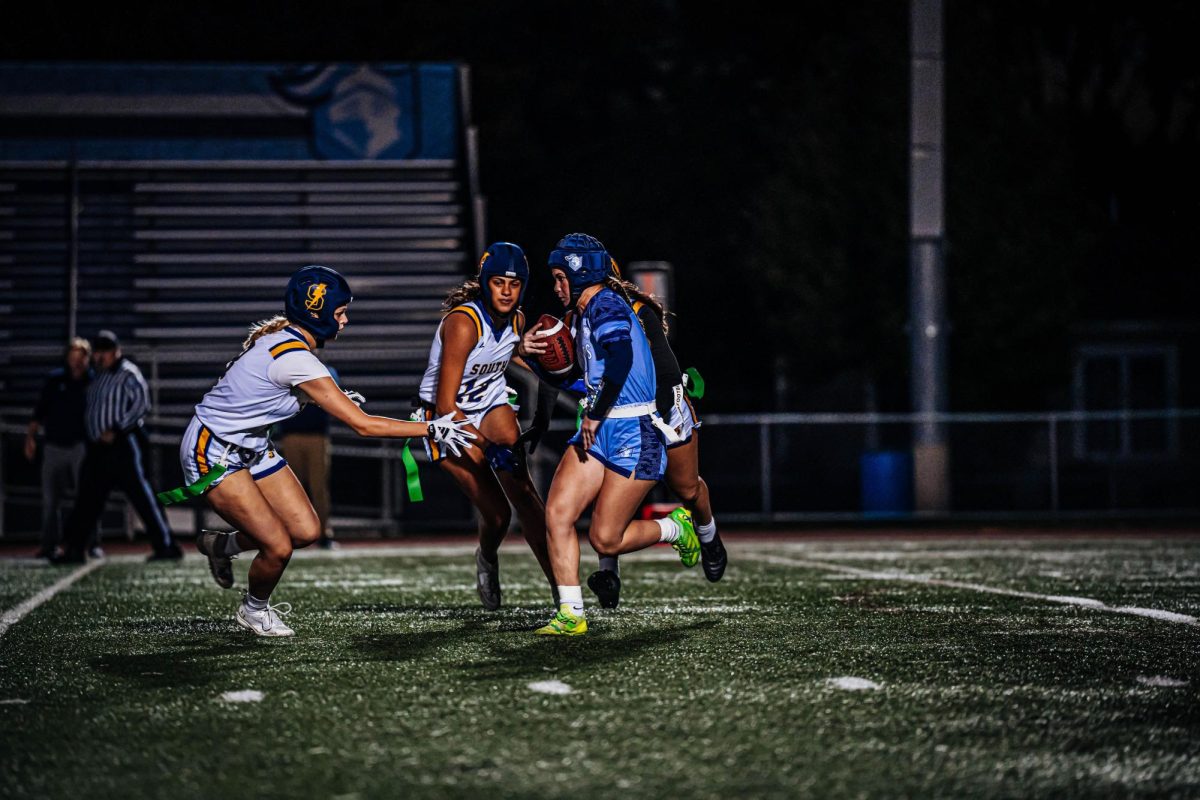From taped ankles to torn ACLs, South’s athletic trainers work daily to keep student-athletes safe and playing their sport, Tony Catsaros, Head Athletic Trainer, said. Although the three trainers’ main priority is injury prevention, they also work on promoting short-term health and educating athletes on their bodies, Catsaros said.
To help South’s athletes understand their injuries, whether minor or severe, the trainers use posters and visuals to simplify the problem and help come to a solution, Catsaros explained. This way they can come to terms with the problem, and athletes can work on making themselves healthy, Tim Mizdrak, Assistant Athletic Trainer, said.
“If an athlete knows what is going on with their [body], it will help them recover faster and they won’t do as many things to put themselves in jeopardy [in the future],” Mizdrak said.
Going to South’s trainers at the beginning of a new season is a way for students to prepare for the physical demands of their sport and prevent minor injuries, sophomore Kathleen Hiltebrand, Girls Track and Field athlete, explained.
“Doing physical therapy in the trainer’s, especially if you [are] new to a sport or new to an injury, [is a way students] can get tips and tricks about what kind of stretches they need to do and what kind of mobility they need to do,” Hiltebrand said.
For students, the trainer’s room is not just a place full of pain, it is somewhere they can go to talk and have a safe
place, Hiltebrand said.
“The environment in the training room is welcoming and there’s always a lot of people from every kind of sport,” Hiltebrand said. “The [trainers] are always talking to students and they [are] never closed off, their doors always open.”
All of the athletic trainers are willing to try new things in order to find the best and fastest recovery for a student, Megan Shipp, Assistant Athletic Trainer, explained. Their goal is long-term recovery that will help the athletes in the future, and prevent them from playing on their injuries, Shipp said.
“It can be really hard to get [athletes] to see beyond the day-to-day,” Shipp said. “[But] we take a look and say: ‘we
might miss one game today, but missing that game today might ensure and guarantee that we [are]able to play more
games in the future.’”
In addition to aiding athletes in their journey through sports and school, the athletic trainers try to create relationships with the other qualified adults in their athlete’s lives, Shipp explained.
“[Being a trainer is about] being open and honest about that communication and [making sure] I listen, interpret,
and value somebody else’s opinion,” Shipp said. “[That way] we can bring that all together [to care] for that person.”
Aside from their physical aid to students, the trainers aim to make their room a safe place for all, Catsaros said. The
training room is always open and the trainers are there to talk to athletes about themselves and their sports, Catsaros
said.
“[The training room] is a good place for [athletes] to come hang out,” Catsaros said. “We have kids all afternoon come,
go, and just chat. If that [is] what their emotional need is for that day, I [am] glad we can provide a space for them.”








